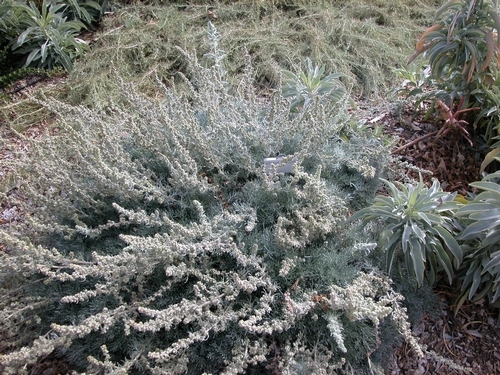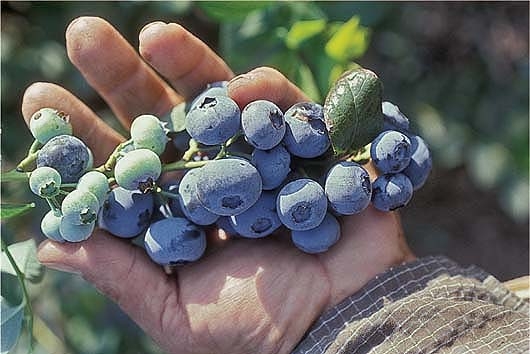From the UC Blogosphere...
African Odyssey: From a Fog-Harvesting Beetle to a Thundering Elephant
Entomologists don't always study insects. If you're James R. Carey , distinguished professor of entomology at UC Davis, and...
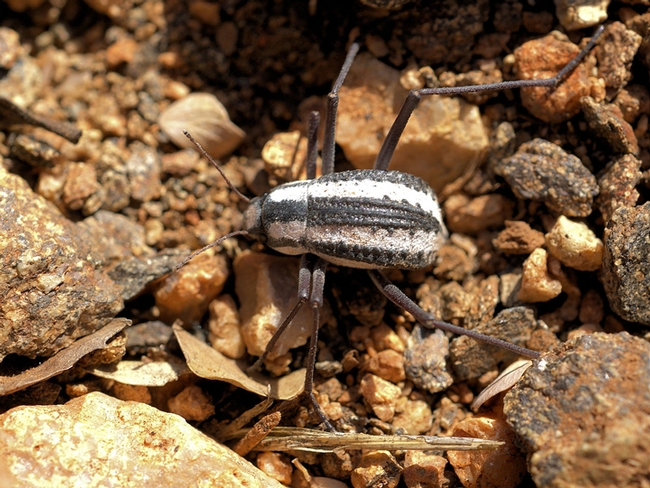
A Racing Stripe Darkling Beetle at Epupa Falls, Namibia. (Photo by Hans Hillewaert, Courtesy of Wikipedia)
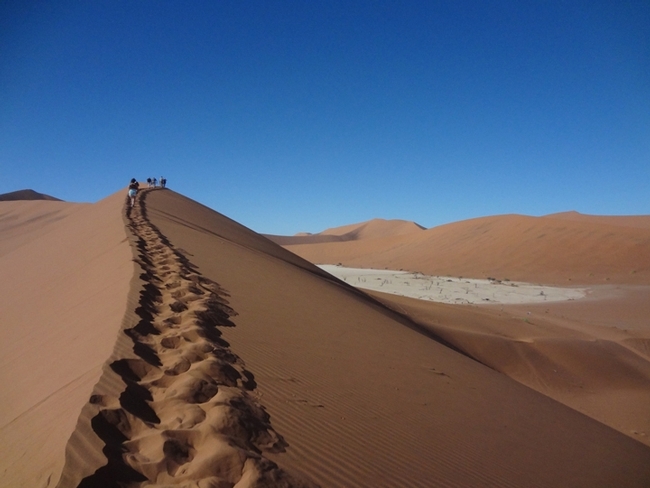
The world's second highest sand dune (Sossusvlei's Big Daddy). (Photo by Patty Carey)

Entomologist James R. Carey also took an interest in elephants on his African Odyssey. This is an African elephant in Murchison Falls National Park, Uganda. (Photo by Patty Carey)
The Days of Bees and Roses
This weekend will be somewhat like "The Days of Bees and Roses." On Saturday and Sunday, May 2-3, the California Center for...
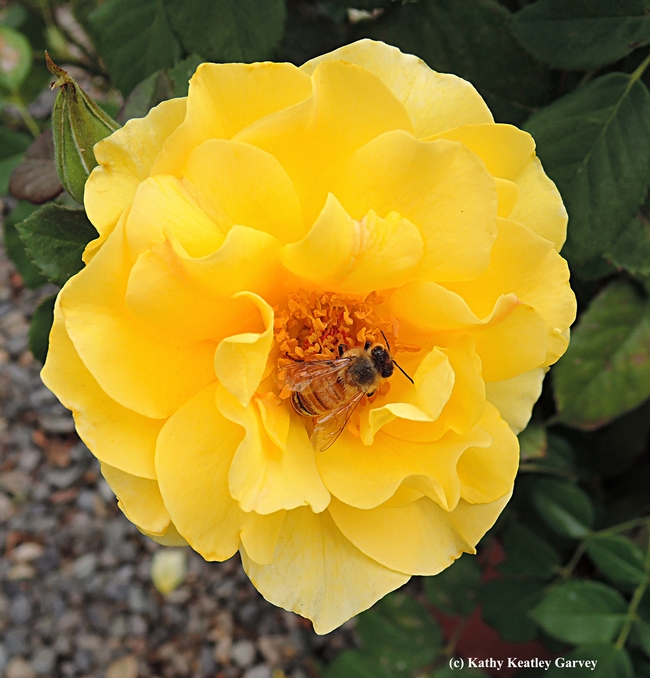
A honey bee foraging on a yellow rose purchased at the 2014 UC Davis Rose Days. (Photo by Kathy Keatley Garvey)
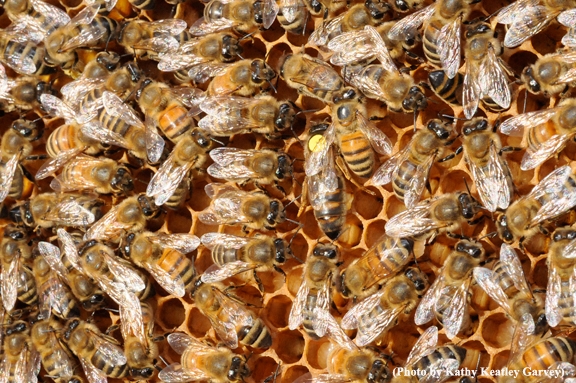
Visitors can see a bee observation hive on Saturday, May 2 at the Häagen-Dazs Honey Bee Haven during its fifth anniversary celebration. (Photo by Kathy Keatley Garvey)
Desert dwellers getting used to dry landscaping
"I don't think anybody realized how attractive it could be," said Stu Stryker, president of the homeowners association board.
Janet Hartin, UC Agriculture and Natural Resources Cooperative Extension advisor, said people in the Coachella Valley are getting used to the look of desert landscaping.
"A lot of people move here from Ohio, from Minnesota, from Florida, and they love the traditional green look … and they want to bring that image to the desert," Hartin said. "They're a harder sell. They'll walk through this park and think it's beautiful, but it doesn't look like home."
With good education and “a peek at some of their (rising) water bills,” she thinks most people will at least cut back on turf.
"This drought is one of the worst in modern history. We don't know whether it will continue or not — Mother Nature will let us know — but we have to assume it will," Hartin said.
Recent state water conservation mandates give additional incentive to replace turfgrass with rock, sand or gravel. Four of the Coachella Valley's five water agencies will be required by the state to shave off 36 percent of their 2013 water usage.
The Desert Sun also posted an article under Hartin's byline titled Ten ways to conserve water in your landscape. The article is accompanied by a video featuring Hartin describing many of her water conservation tips.
Bee All You Can Bee
Time to celebrate! The UC Davis Departmentof Entomology and Nematology has scheduled a fifth anniversary celebration...
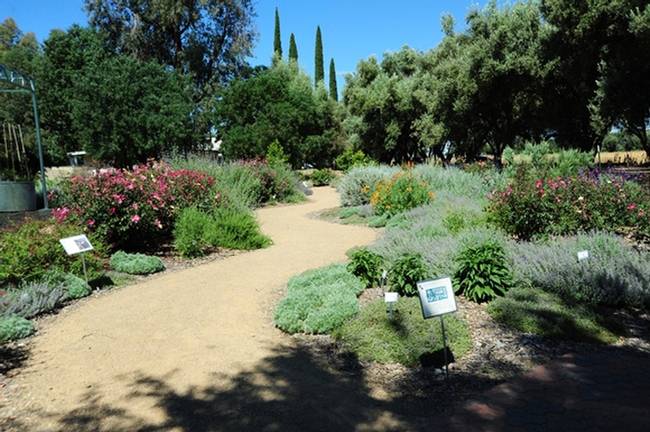
Several years after it was planted, the bee garden looked quite mature. This photo was taken May 22, 2012. This year it is five years old. (Photo by Kathy Keatley Garvey)
UC ANR researchers aim to minimize water use in blueberries
UC Agriculture and Natural Resources (UC ANR) researchers don't want to know how much water it takes to grow blueberries, but how little, reported Bradley Zint in the Los Angeles Times.
The story featured Darren Haver, a UC ANR Cooperative Extension advisor in Orange County and director of the UC South Coast Research and Extension Center in Irvine. At the center, blueberries are being grown with varying amounts of water to compare yield and quality. Because of the drought, farmers need to know how to minimize water use while maintaining a viable business.
"Part of my job as an advisor is to take that information and put it in a format that a farmer could use or the general public could use," he said. "It's my job to distill it down."
The story also notes that drought-tolerant dragon fruit are under study at that at the South Coast REC.
"We need to find more crops like this," Haver said.
Other drought news:
Diversification: A Response to Drought
Richard Jones, Growing Produce, April 27
Growers must prepare to make changes, especially if their sole focus is high-value crops, said Samuel Sandoval, UC ANR specialist in water resources management at UC Davis. “We're seeing many growers put a lot of investment risk on a resource — water — that's very unreliable. We need to think ahead of the curve and find systems that are more flexible,” he says. Sandoval's suggestion: diversifying with both permanent and annual crops.
Your water footprint is bigger than you realize
Laura Bliss, The Atlantic CityLab, April 28, 2015
In the developed world, every bite of food, every mile we drive, every light switch we flip relies on water. The average American has a "water footprint" of 2,220 gallons per person, per day. "The numbers are pretty accurate," says Doug Parker, director of the UC Agriculture and Natural Resources California Institute for Water Resources. "But my question is, what do you do with it? If I'm interested in solving the drought in California, using less energy from power plants doesn't really matter because that water can be used downstream by a farmer."



